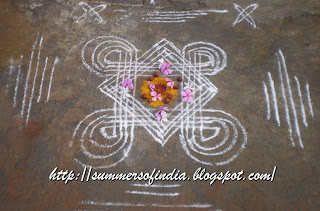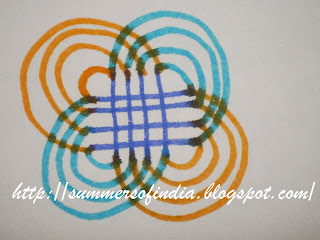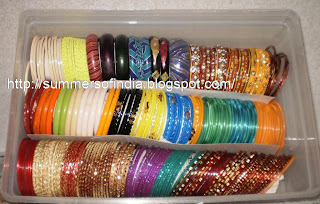Crochet is a French word meaning a hook. Its an art of creating lace from yarn using a needle with a hook. A loop or loops are created and pulled from other loops to create the lace. This is considered as one of the oldest crafts and its origin is not clear. Here is the link if any one wants to know more about the craft:
Crochet lace is much cheaper and easy to make at home when compared to other forms of laces. This was quite popular in India and still is popular since ancient times. Most of the women in India knew this art and we have our own designs and motifs. I remember my granny and mother creating, lotuses, gods and goddesses, butterflies and what not. Table cloths, bedspreads, bags, valances for doors and windows, door curtains, covers for trays, lace edging for petticoats, saris, even handkerchiefs were so popular. Skirts, for young children, even feeding bottle covers and flask covers were also in vogue.
This art though lost its popularity in between has now picked up again. We can now see skirts, doilies, table covers, cushion covers and bed spreads, used as lace edgings for various clothes, including saris, blouses and also used as patches on tunics or kurthas and odhnis (stoles) are now again popular.
Narsapur is a remote place in West Godavari District of Andhra Pradesh, India. It is famous for the crochet lace products. Women have formed co-operatives and create beautiful lace products. Much of it is exported earning huge foreign exchange. The designs and products have undergone change and are constantly modified to suit the demand and tastes of all those from different countries.
Here I share some of the products which were on display at a recent show...
The stall from Narsapur at one of the exhibitions, selling all types of crochet items. You can see an array of colourful, skirts and tops for all ages...
Here is one of the designs. The thread used may be coarse cotton, or very fine cotton like that used in sewing machines....

See this colourful one how beautifully these colours were used in a beautifully made circular table cover with scalloped edges...
Here you can see another one...
See the circular patterns...
A closer look...
Friends I could not manage get any more pictures as it was getting late and I had to head back home...Ma y be next time I can click some more patterns for you



















































